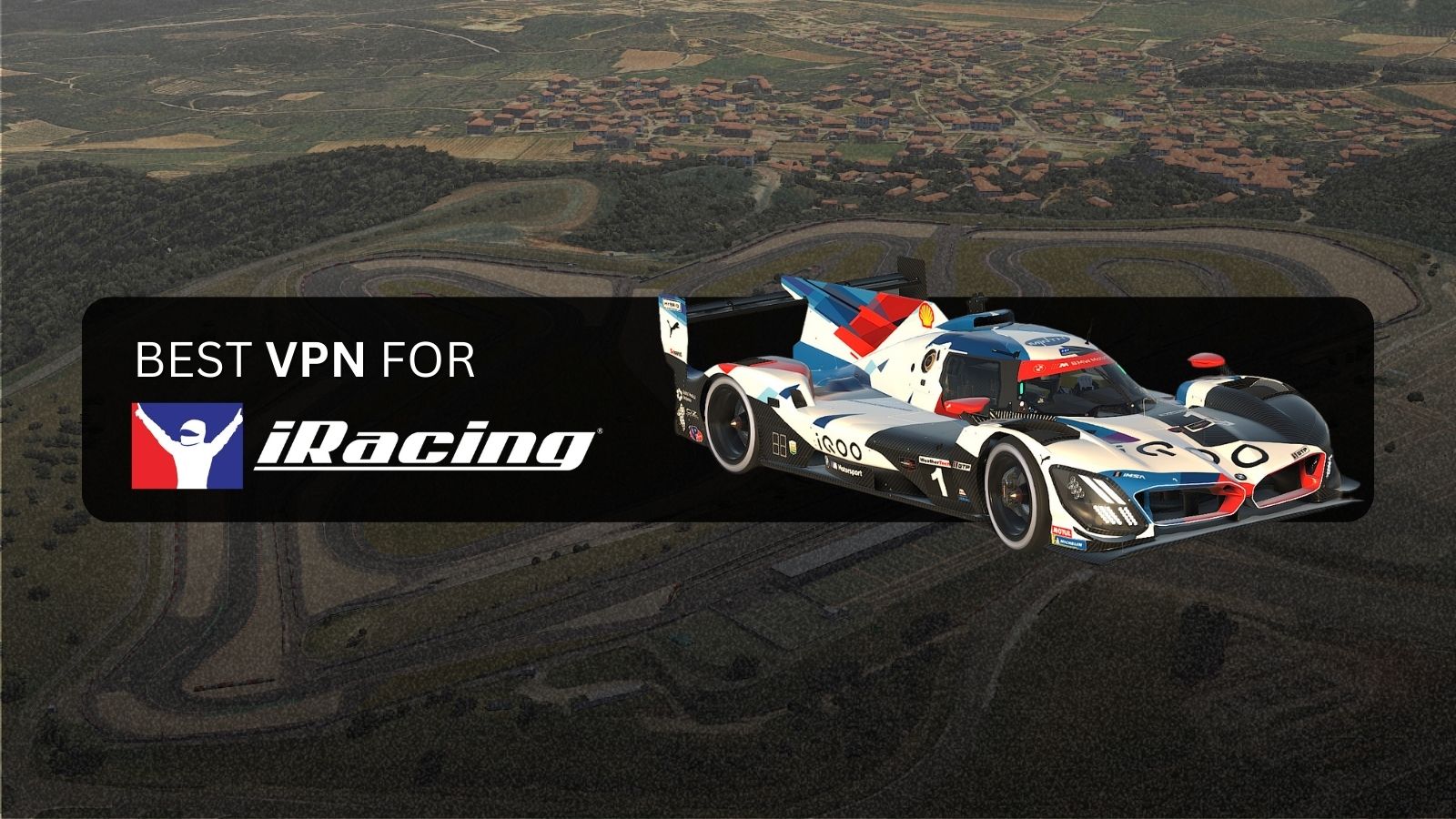
9 Best VR Headsets to Help You Discover the Third Dimension
Virtual Reality or VR is fast catching up in addition to the already crowded gaming PC and console gaming market. VR offers an immersive experience and puts you in the center of the action. Not just games, VR is also being used for producing 360-degree photos and videos so you get the feeling of attending a rock concert from the comfort of your home.
There aren't many players in the VR space although, the field is fast catching up thanks to mobile VR and Windows Mixed Reality. While VR is a great way to be a part of the action, the technology is far from mature and there are many factors to be considered before purchasing a capable VR headset. Most high-end VR headsets are tethered to a PC or console to offer great visuals not possible via mobile phones. When you buy a VR headset, you should note the controllers that are being offered in the box and the degrees of freedom (DoF) they offer. You should also look at the quality and refresh rate of the display. A poor quality display with low refresh rates can induce headaches and nausea. Comfort is also an important factor as is the audio quality.
There aren't too many VR apps and games but SteamVR and the Oculus store have some impressive titles. Most VR apps and games are more like demonstrations of the platform but consoles like the PS 4 offer full games in VR. It ultimately depends on how involved you wish to get.
With these factors in mind, we've narrowed down on some of the best VR headsets that offer a good combination of features and games. So, here are the 9 best VR headsets to buy in 2019 that offer an immersive experience across PC, consoles, and smartphones.
1. HTC Vive
- Features: Support for SteamVR and VivePort; Room-scale VR; 360-degree precision tracking
- Connectivity: HDMI; USB 3.0
- Display Resolution: 1080 x 1200 (per eye) @ 90 Hz
- Sensors: Motion; Camera; External motion tracking
- Dimensions (W x H x D): 18.4 x 13.1 x 9 in
The HTC Vive along with Oculus Rift was one of the first VR headsets to be available for gamers and we've come a long way from that both in terms of content and hardware. The HTC Vive still offers gamers a compelling VR experience and other OEMs are yet to match its performance. Along with the Vive, you get two motion-tracking controllers built-in for a 15 x 15 feet flexible playing experience.
You get over 2,800 VR-compatible titles available for the Vive and that not only includes games but also programs such as Google Tilt Brush. You can also use the Vive standing, sitting, or in any position as long as you have a space of at least 6.6 x 5 inches. The two 1080p screens on the headset offer an immersive VR gaming experience but it is not really suitable for text reading. Like all VR headsets, the HTC Vive comes at a premium and also requires a fair amount of expenditure on beefy PC specs. Also, you cannot just buy the controllers standalone if you want to engage in multiplayer with a friend.
- Pros: Immersive VR experience; Included motion controllers
- Cons: Tethered headset limits whole room VR
2. Oculus Go
- Features: Standalone VR; Motion controller included in the box; Oculus app; Dedicated software library
- Connectivity: N/A
- Display Resolution: 1280 x 1440 (per eye) @ 60/72 Hz
- Sensors: Accelerometer; Gyroscope
- Dimensions (W x H x D): 8.3 x 8.3 x 4.8 in
Even with a few faults to go with it, the Oculus Go is the best standalone VR headset you will find in the market and makes for an inexpensive entry point into the world of VR. The Oculus Go does not require a PC or a smartphone so you can save a lot on an expensive gaming rig. The Go comes with an intuitive controller included in the box so it has you covered there as well. The Oculus app available on Android and iOS can help you customize the headset and also explore a growing catalog of VR apps and games.
The Oculus Go comes in 32 GB and 64 GB capacities and the Qualcomm Snapdragon 821 SoC, while not the latest out there, is capable of driving most of the experiences pretty well. The software library is also surprisingly well stocked and the built-in 3D spatial audio offers an extremely immersive experience.
Since this is a standalone headset, there are a few things to be aware of. This will not output visuals of the quality of a tethered headset connected to a dedicated GPU. You get only one motion controller in the box so that does limit some of the maneuvers. Battery life is also on the lower side. That said, if you're looking to take the first steps in the VR world, the Oculus Go is the best VR headset for the task.
- Pros: Affordable; No tethering to PC or smartphone required; Good visual quality
- Cons: No position tracking; Only one motion controller; Limited power compared to dedicated tethered VR headsets
3. Sony PlayStation VR
- Features: OLED display; Plug and Play setup; 3D spatial audio
- Connectivity: HDMI; USB 2.0
- Display Resolution: 960 x 1080 (per eye) @ 120 Hz
- Sensors: Motion sensors; External visual positioning sensors
- Dimensions (W x H x D): 10.9 x 7.4 x 7.3 in
If you already have a Sony PlayStation 4 or PlayStation 4 Pro, the PlayStation VR makes for a great choice as you can spare yourself the trouble of investing in an expensive gaming PC. The PS VR sports an FHD OLED display for each eye that works at a smooth 120 Hz refresh rate so frames appear smooth and immersive. You would need to factor in the purchase of a PlayStation Camera for tracking the position and movements. The PS VR is geared for a great gaming experience but is also equally effective at offering immersive experiences when viewing YouTube 360 videos or other compatible VR content. The 3D spatial audio pulls you into the action and is very precise.
While you can use the PS 4's DualShock 4 controller, the PS VR comes with a controller of its own that is even more intuitive to use. The overall performance is great but the visuals still do not match that of a VR headset connected to a well-specced gaming PC. Some users might experience nausea in environments that have constantly changing directions. The PS VR requires several wired connections to the console and the PS Camera so the overall ability to move around is limited.
- Pros: Motion control tracking; Great for PS 4 owners; Lower price than most PC-based headsets
- Cons: Requires additional purchase of PS Camera; Some games might induce nausea; Too many wires limit movement
4. Oculus Rift
- Features: 6 free VR titles included; Ultra low-latency tracking; Oculus touch controller
- Connectivity: USB 3.0; USB 2.0
- Display Resolution: 1080 x 1200 (per eye) @ 90 Hz
- Sensors: Motion sensors; External visual positioning sensors
- Dimensions (W x H x D): 10.9 x 8.26 x 6.29 in
Oculus redefined the VR headset segment and the now Facebook-owned company is still the one to beat when it comes to offering a great VR experience. The Oculus Rift is one of the best VR headsets under $500 and offers a 6-game bundle free that includes titles of the likes of Robo Recall, Lucky's Tale, and more. Among most other headsets we've tested, the Rift offers the least latency, but for that, it occupies four USB ports (3 USB 3.0 and 1 USB 2.0). It requires a fairly capable gaming PC to run and comes with a great selection of VR apps and games. The inclusion of Oculus Touch motion controllers and a reduced price for the overall combination makes this a compelling purchase for those looking for an immersive VR experience.
That said, the Oculus Rift does limit movement due to the number of wires that are required to be connected to the PC. It's not a straightforward setup process like the Vive or PS VR so you might have to tinker around in the beginning. The screen door effect is also observable but not during gaming so it is not much of a concern.
- Pros: Immersive VR experience; SteamVR and Oculus platform compatible
- Cons: Requires 4 USB ports to function
5. HTC Vive Pro
- Features: 360-degree controller and headset tracking; Immersive audio; Up to 20 x 20 feet play area; Included Viveport subscription
- Connectivity: DisplayPort; USB 3.0
- Display Resolution: 1440 x 1600 (per eye) @ 90 Hz
- Sensors: a Motion sensor; Camera; an External motion tracking sensor
- Dimensions (W x H x D): 8 x 4 x 2 in
If the original HTC Vive failed to impress you, we're sure the Vive Pro will. The Vive Pro is the best VR headset there is and offers a substantial increase in resolution over the Vive up to 2880 x 1600, which makes for crisper text, better visuals, and overall immersive experience. The HTC Vive Pro offers SteamVR tracking and provides a 360-degree coverage in a 20 x 20 feet space. The Vive Pro is high-res audio certified as well and comes with dual microphones for active noise cancellation. The Vive Pro is also extremely comfortable to wear for long hours of gameplay.
While the HTC Vive Pro offers a decent spec bump over the original Vive, it commands a premium price for the same. And for that price, you won't be getting the base station or motion controllers in the package and they need to be purchased separately. That said, the Vive Pro effectively blocks out any external disturbance. There is definitely room for improvement in many areas, though including the audio quality and quality of the face pads. The steep price increase from the original Vive is something we're not very comfortable with but if you are looking for the best VR headset, this is it.
- Pros: High-res graphics and audio; Comfortable for long sessions
- Cons: Very expensive; Does not come with controllers; No HDMI input
6. Samsung Gear VR
- Features: Included Gear VR controller; Oculus game support; Compatible with Galaxy flagship smartphones
- Connectivity: USB 3.0; USB 2.0
- Display Resolution: As per phone
- Sensors: Accelerometer; Gyrosensor; a Proximity sensor
- Dimensions (W x H x D): 9.49 x 7.99 x 4.21 in
We have always liked the Samsung Gear VR as a smartphone-powered VR headset and should top your list if you are using a Samsung Galaxy S or Note flagship device. It has now taken things to the next level with the addition of a motion controller. Besides the new controller, the updated Gear VR is sharper and lighter than before. There’s a USB C connector that you can directly hook onto a Galaxy phone.
The list of model compatibility starts with the Galaxy S9 Plus and goes on to include the Galaxy S9 Plus, Galaxy S8 Plus, and the Galaxy S8. The motion controllers have some reminiscences of the HTC Vive design. But it is really the controllers that make the VR as huge a deal as it is – giving you a peek into a world of VR that was previously unheard of.
The overall performance of the Gear VR is great but is largely dependent on the Galaxy phone that you use. We recommend using more powerful phones such as the Galaxy S9 or Note 9 if you want to get the most out of this headset.
- Pros: Built for Samsung Galaxy phones; Oculus software library
- Cons: Not all apps support the motion controller yet
7. Samsung HMD Odyssey+
- Features: Easy setup; Windows MR compatible; Built-in AKG headphones and mic; 110-deg FoV; Flashlight
- Connectivity: HDMI; USB 3.0
- Display Resolution: 1440 x 1600 (per eye) @ 90 Hz
- Sensors: Accelerometer; Gyroscope; a Proximity sensor; IPD sensor; Compass
- Dimensions (W x H x D): 7.64 x 5.08 x 4.30 in
Microsoft has emphasized a renewed focus on VR in the latest updates to Windows 10 in the form of Windows Mixed Reality. The Samsung HMD Odyssey+ is one of the best VR headsets for Windows Mixed Reality and offers a high-resolution dual AMOLED 3K displays, immersive spatial 3D audio powered by built-in AKG headphones, a huge 110-degree field of view, and more. The Odyssey+ also comes with an anti-screen door effect technology that offers better sharpness and contrast. You also invoke the Flashlight mode that allows you to peek into the real world without having to remove the headset. The HMD Odyssey+ is compatible with VR titles from the Windows Store as well as from SteamVR.
The performance of the Odyssey+ is great and we actually recommend this over the Rift or the Vive. Some users have reported discomfort especially, on the nose fitting and the positioning of the built-in headphones. This is still Gen 1 technology so room for improvement is definitely there. The Flashlight feature is unique to Windows Mixed Reality headsets but the outside camera is a low-res black and white one so it's not really a great way to look at real-world objects.
- Pros: Great for Windows Mixed Reality; AMOLED display with anti-SDE
- Cons: Not very ergonomic for long gameplay; Flashlight camera needs improvement
8. Oculus Quest
- Features: Easy setup; Oculus insight tracking; Touch controllers; Qualcomm Snapdragon 835 SoC; 6 DoF
- Connectivity: USB Type-C
- Display Resolution: 1440 x 1600 (per eye) @ 90 Hz
- Sensors: Accelerometer; Gyroscope; a Proximity sensor; IPD sensor; Compass
- Dimensions (W x H x D): 8.7 x 7.6 x 4.1 in
The Oculus Quest is the best VR headset in the market if you want to experience a truly untethered solution. It does not require you to pair it with powerful gaming PCs or smartphones and can install and run VR content directly on the onboard storage. It also supports room scaling without having to rely on external sensors. The Oculus Quest is aimed at those trying out VR for the first time and do not want to spend a lot of money on this tech. The Quest is somewhat heavy and large for a VR headset, but it looks good and does the job well. Inside the plastic front is a set of four cameras that provide the inside-out tracking feature for the Touch controllers. These cameras provide six degrees of freedom (6DoF) tracking, which is impressive. Considering its size, the Quest provides really good onboard audio. You can also plug-in your own headphones if needed to minimize external noise. The headset can be used comfortably irrespective of whether you have glasses or not.
The Oculus Quest's OLED display offers a resolution of 1400 x 1600 pixels per eye, which is sharper than most cheap VR headsets that just offer a full HD screen. The refresh rate of 72 Hz is lower than what you would find in the Oculus Rift, which has a 90 Hz display. This is one area that Oculus had to cut corners keeping in mind the capabilities of the Snapdragon 835 mobile SoC and in order to keep the price low. That being said, 72 Hz is not a bad refresh rate by any means but remember that the higher the refresh rate in VR, the lower is the chances of experiencing nausea and headaches while playing. The Quest's touch controllers feel good and track accurately. Setting up the Quest is really easy and all you need to do is connect the headset to Wi-Fi to download VR content and update the firmware. It also offers a virtual 'Guardian' feature to prevent you from bumping into walls in the real world. Battery life averages about 3 hours of continuous use, which is just about okay. Oculus also offers quite a bit of content that should keep you engaged for quite a while.
- Pros: VR without a PC or smartphone; 6DoF
- Cons: Slightly outdated hardware; Battery life can be better
9. Oculus Rift S
- Features: Easy setup; Oculus insight tracking; Touch controllers; Qualcomm Snapdragon 835 SoC; 6 DoF
- Connectivity: DisplayPort 1.2; USB 3.0; USB 3.0
- Display Resolution: 1280 x 1440 (per eye) @ 80 Hz
- Sensors: Accelerometer; Gyroscope; Magnetometer
- Dimensions (W x H x D): 10.9 x 8.26 x 6.29 in
While we are yet to see a true successor to the original Oculus Rift, the Rift S offers an incremental upgrade by way of a higher resolution screen and built-in tracking. The Rift S can connect to your PC's DisplayPort or USB 3.0 ports via a long 5m cable that should be enough for most rooms. The Rift S is somewhat heavier than the Rift and fits snugly on your head supported by a plastic mold filled with padding for comfort. Instead of having to rely on external sensors for positional awareness, the Rift S uses a pair of cameras to track your position and controller movement. The Oculus controllers are somewhat improved in this generation but users of the original Rift will feel right at home. However, it is to be noted that the new controllers are not compatible with the previous generation Rift. Although the Rift S has onboard audio, the lack of bass means that you'll find yourself plugging in your headphones for better audio immersion. Another major change we find in the Rift S is that Oculus chose to go for an 80 Hz LCD screen instead of OLED. This has both pros and cons. The advantage is that you now get an RGB sub-pixel array that offers better colors. The disadvantage is that you don't get to see the true blacks that only OLED displays are capable of.
The Oculus Rift S has very good tracking as long as there is sufficient ambient light thanks to the five cameras on the body. Setting up the Oculus Rift S is very easy even for first-time users. The Rift S is compatible with a variety of games including the ones from SteamVR so you will have plenty to play with. The performance of the Rift S is directly dependent on your gaming PC. Oculus says a minimum of a Core i3-6100/Ryzen 3 1200 CPU with an NVIDIA GeForce GTX 1050 Ti or AMD Radeon RX 470 will do. However, you might want to use a significantly better PC for optimal results. The Oculus Rift S builds upon the features that made the original Rift one of the best VR headsets, but it does not offer any incentive to upgrade if you already have the Rift or the HTC Vive Pro.
- Pros: Great tracking; High-res screen
- Cons: No OLED display; Weak onboard audio
Dear readers, that was our take on the best VR headsets available in the market currently. Do remember that VR is still in the infancy and it will take quite some time for VR experiences to become more polished and more affordable. It is important that you have a capable PC setup to realize at least some of the benefits.
We hope that this article has helped clear any confusion you may have had in deciding on a good VR headset. Feel free to let us know your thoughts in the comments below.
Found this article interesting? Share it online and also get instant updates on TechNadu’s Facebook page or Twitter handle.











